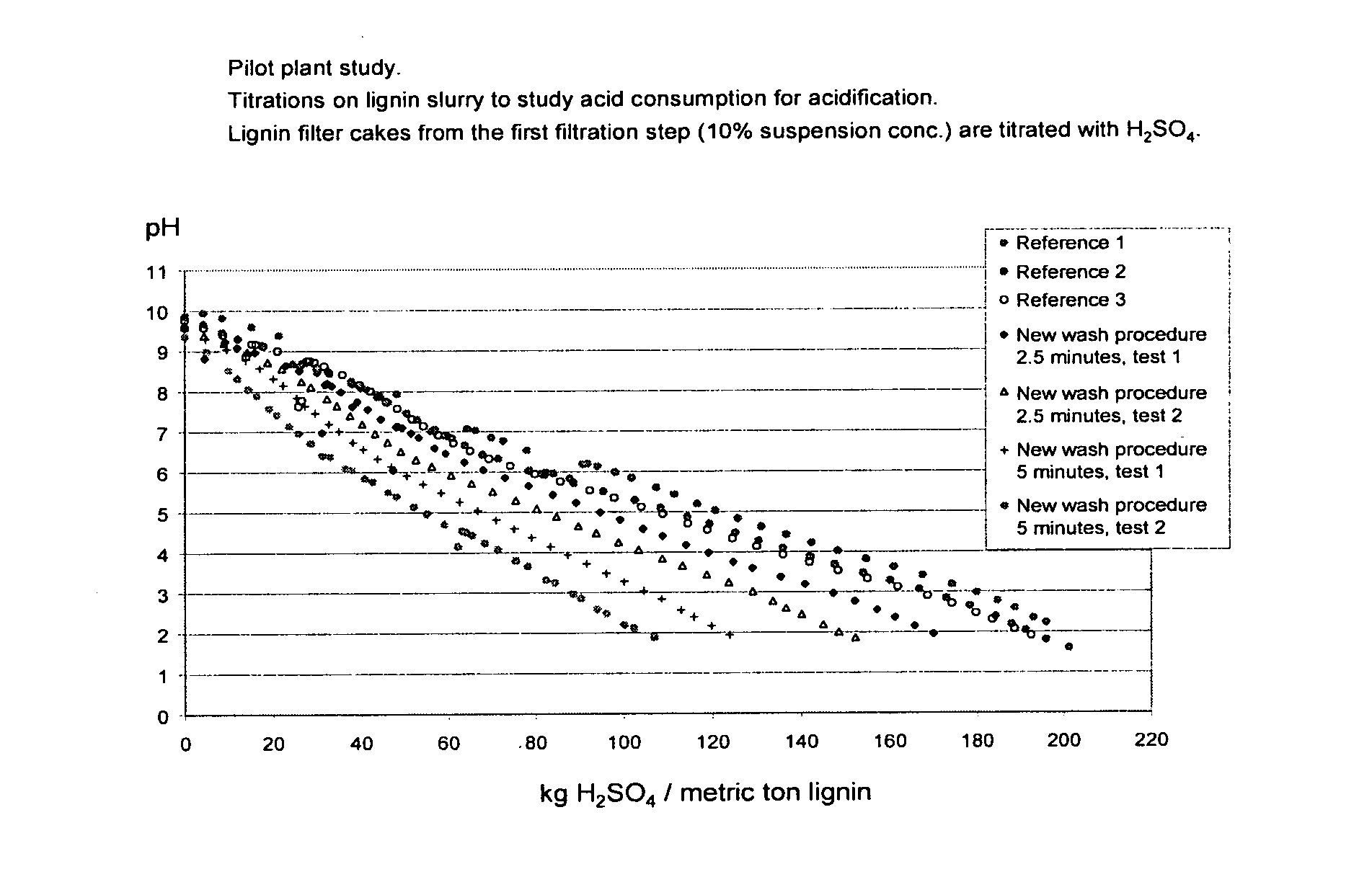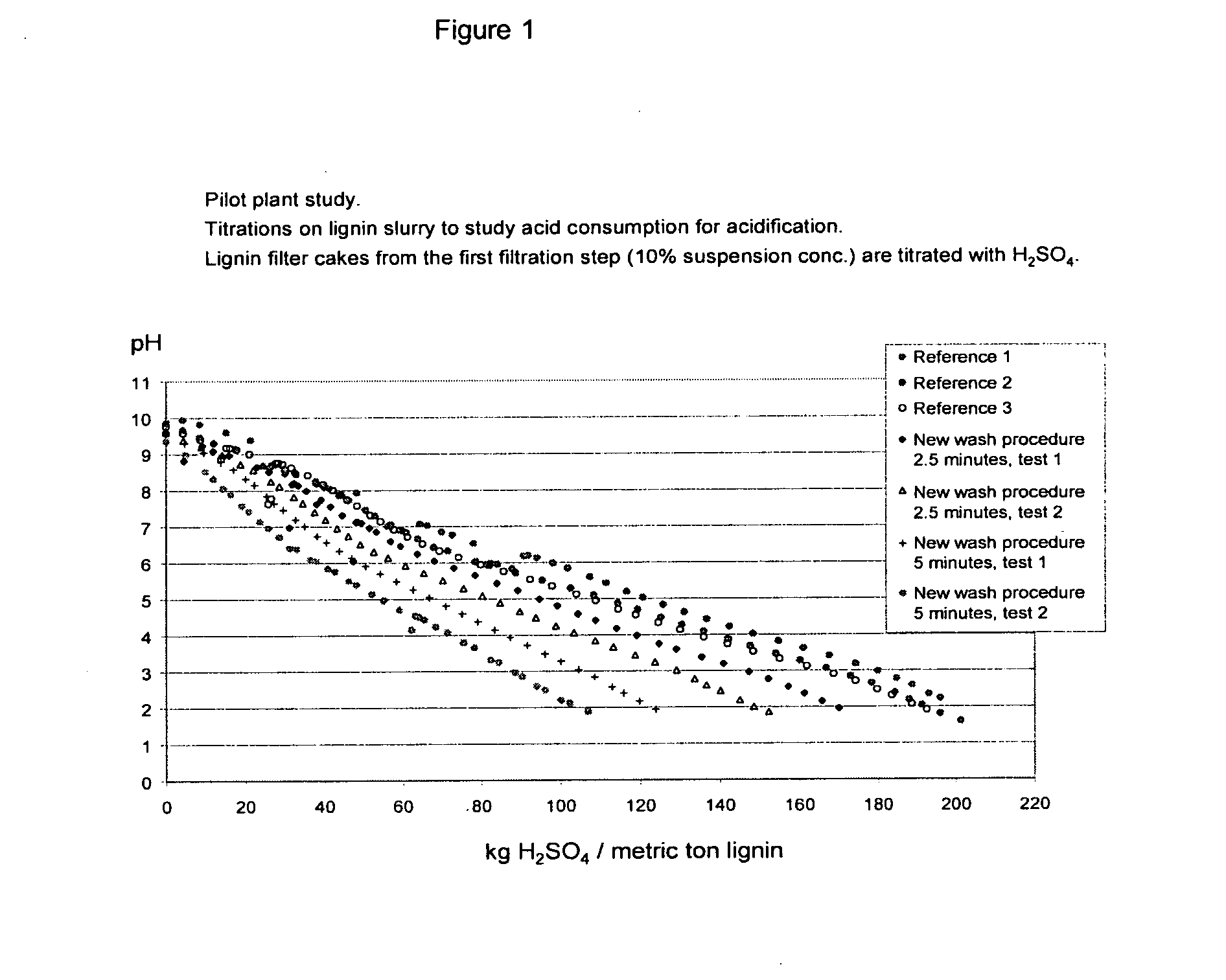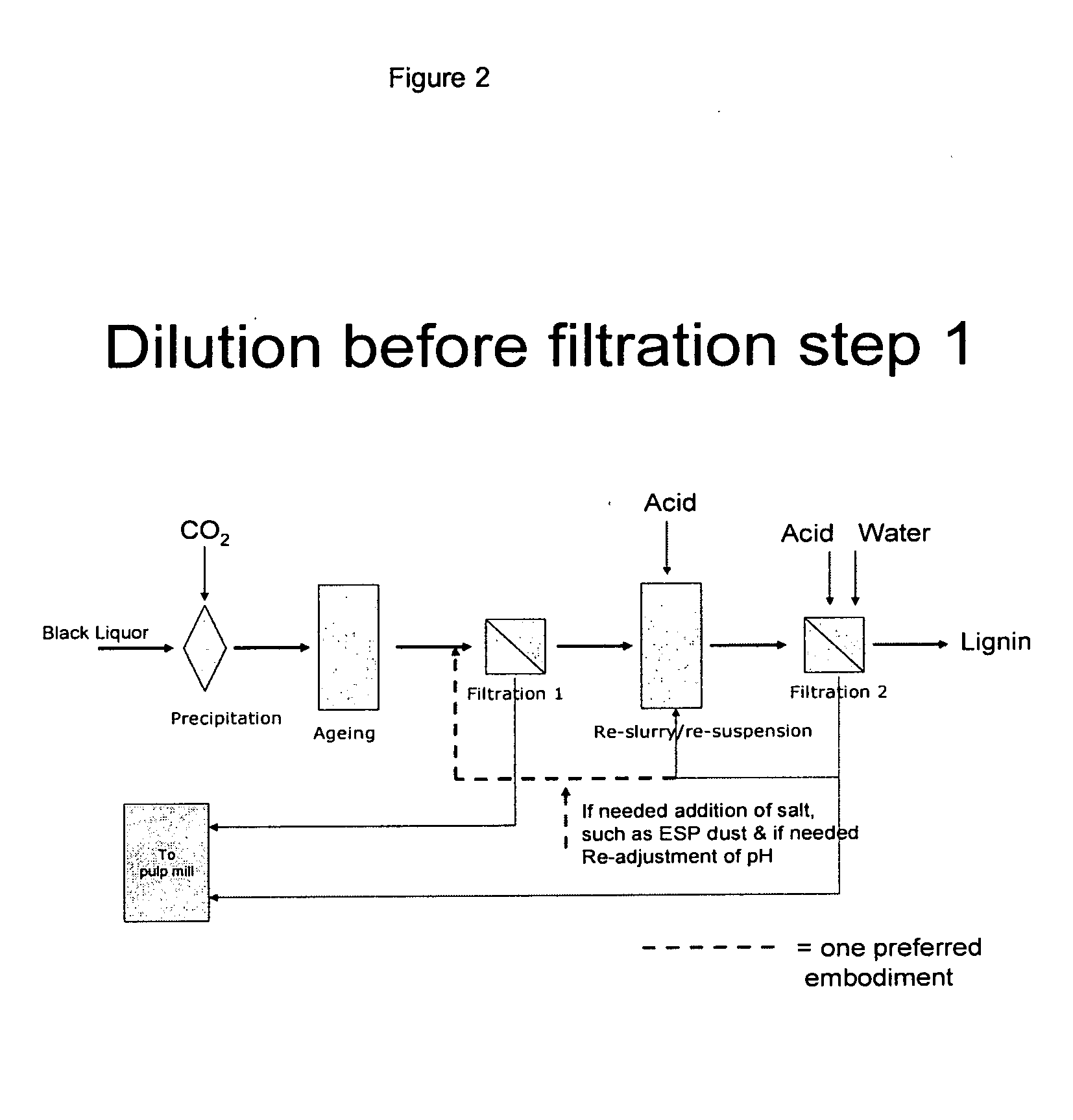Method for separating lignin from black liquor, a lignin product, and use of a lignin product for the production of fuels or materials
- Summary
- Abstract
- Description
- Claims
- Application Information
AI Technical Summary
Benefits of technology
Problems solved by technology
Method used
Image
Examples
example 1
[0041]Lignin was precipitated according to the method of the first aspect of the invention (see in particular appended FIG. 3). A filter cake of lignin was formed in a filter press. The filter cake was successfully washed by applying in this specific example a 7.5%-w solution of sodium sulphate in water. Sodium sulphate was chosen since it can be brought back to the recovery system without problems, is used by many kraft pulp mills as a make-up chemical, and is often also produced internally in the mill in many cases in form of sodium sesquisulphate for chlorine dioxide production in pulp bleaching. The sulphuric acid consumption in the subsequent re-slurrying stage could be reduced from the reference case (a filter cake pressed and air-dried to approximately 65% DS) by 50%.
example 2
[0042]Lignin was precipitated according to the method of the first aspect of the invention (see in particular appended FIG. 3). A filter cake of lignin was formed in a filter press. The filter cake was successfully washed by applying in this specific example a 10%-w solution of recovery boiler precipitator dust (which is an ESP-dust) in water. The recovery boiler dust consists mainly of sodium sulphate, and is normally mixed together with strong black liquor before firing in the recovery boiler. The sulphuric acid consumption in the subsequent re-slurrying stage could be reduced in the same way as in Example 1.
[0043]The sulphuric acid consumption was lowered 170-180 kg / ton lignin to 90-105 kg / ton lignin. Experiments with the half amount of washing water gave also logically results between the well washed filter cake and the unwashed filter cake.
[0044]In the pilot plant study as set out above titrations were done on lignin slurry to study acid consumption for acidification. Lignin fi...
example 3
[0051]In a case with a pulp mill producing 350.000 tonnes of pulp with 50.000 tonnes / year lignin production with the process as set out above according to the first aspect the need of 160 kg of H2SO4 is used per tonne of lignin, the need for external sodium hydroxide to handle the purge of ESP-dust is 92 kg per tonne of lignin. Per tonne of pulp this corresponds to 30 kg H2SO4 and 17 kg NaOH. By using electrolysis of ESP-dust the input of H2SO4 and thus the need to purge ESP-dust is reduced.
[0052]Various embodiments of the present invention have been described above but a person skilled in the art realizes further minor alterations, which would fall into the scope of the present invention. The breadth and scope of the present invention should not be limited by any of the above-described exemplary embodiments, but should be defined only in accordance with the following claims and their equivalents. For example, any of the above-noted methods can be combined with other known methods. ...
PUM
 Login to View More
Login to View More Abstract
Description
Claims
Application Information
 Login to View More
Login to View More - R&D
- Intellectual Property
- Life Sciences
- Materials
- Tech Scout
- Unparalleled Data Quality
- Higher Quality Content
- 60% Fewer Hallucinations
Browse by: Latest US Patents, China's latest patents, Technical Efficacy Thesaurus, Application Domain, Technology Topic, Popular Technical Reports.
© 2025 PatSnap. All rights reserved.Legal|Privacy policy|Modern Slavery Act Transparency Statement|Sitemap|About US| Contact US: help@patsnap.com



